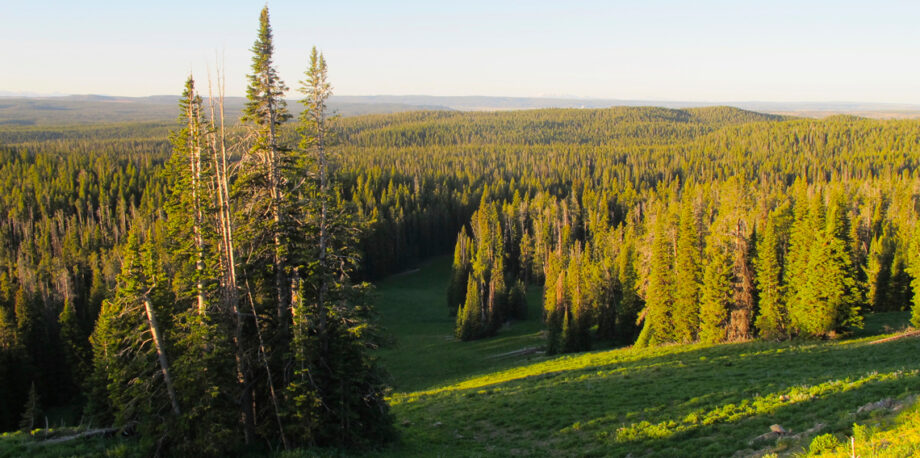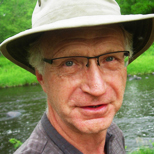January 30, 2013 — In the age of the Anthropocene, when human beings have their fingerprints on everything, even altering the climate, does it make sense for ecologists and conservation biologists to talk about pristine Nature? As it becomes apparent that humans have been tampering with the natural ecology for centuries or even millennia, is the pre-Columbian world a useful benchmark in conservation biology and restoration of plant and animal communities in large natural areas? We invited Emma Marris, author of Rambunctious Garden, and Sean Gerrity, president of American Prairie Reserve, to continue a conversation on this topic, which began last summer at the Aspen Environment Forum.
Emma Marris
Author
Rambunctious Garden: Saving Nature in a Post-Wild World
“The more we learn about humanity’s effects on North American ecosystems before the arrival of Europeans, from day-to-day management with fire and agriculture to potentially anthropogenic extinctions of large animals, the clearer it becomes that using 1491 as a baseline only makes sense in human, cultural terms. In the long view of ecology, 1492 was just a historical moment marking a divide between different kinds of human management of the landscape, not some sort of mystical veil, before which the continent was somehow ‘pristine.’ I think the word pristine is nonsensical and unhelpful as applied to ecosystems.
Now, that doesn’t mean that 1491 should be forbidden as a restoration goal. It may be that we decide we like the way people back then were managing the land better than we like our current management practices. A restoration in this spirit would bring back not only the plants, animals and ecological relationships of an earlier time, but also the management tools, including rule-bound hunting, fire and perhaps even planting.
This is subtly different than a more traditional goal of reassembling an ecosystem and then letting it go out of our control. I think ‘un-managed-ness’ or wildness is a worthy goal, too, though a piece of land that we have chosen to let run wild will very likely not look anything like it did in 1491. Even if we started with a piece of land populated only by native species, we would soon have exotics moving in and competing for space and resources with the natives. And as the climate changes, species would move in and out and change in abundance. The result, according to emerging research on novel ecosystems, might well be as diverse or more diverse than the native system. But it would be unfamiliar.
This is the paradox of modern conservation. If you want historical ecosystems, you have to manage them intensively, wrestling them to your benchmark against their propensity to change in a changing world. If you want wild or unmanaged ecosystems, they won’t be historical.”
Sean Gerrity
President
American Prairie Reserve
“Even in these times, I believe it is important to set aside big, fully functioning ecosystems. While we are not likely to wholly understand their scientific value for another few hundred years, by then it would be too late.
In one historically important area of the Great Plains, American Prairie Reserve is working to do just that by building a wildlife park of more than 3 million acres for the public’s enjoyment. An abundance of animal, insect and bird species thrived here for thousands of years. Archaeologists have carbon-dated bones of bison, pronghorn antelope, elk, bears and other grassland animals found around the fire pits of early hunters as far back as 9000 BC. Written accounts of the abundant wildlife started in the late 1700s with Hudson Bay fur trappers, continued through the journals of explorers Meriwether Lewis and William Clark in the early 1800s and were later corroborated in paintings by artists like George Catlin. This diversity, however, was largely wiped out by pastoral newcomers in an astonishingly short period between 1860 and 1900.
With agricultural pursuits and their associated human populations now in decline here due to harsh weather and poor soils, at APR, we are betting that it is entirely possible to return wildlife populations to Serengetilike numbers, especially since the mixed-grass prairie habitat is still mostly intact even if the wildlife abundance and many natural processes are currently missing. By looking to the past to understand the full suite of species that coexisted with humans for thousands of years, I believe that eventually it will be possible to restore species to numbers that will enable fully functioning ecosystems, yet this time surrounded by modern commerce. I believe it is a matter of scale, so at APR we are working to assemble enough habitat to support plant and wildlife diversity, migrations and ecosystem processes, even in times of drought or disease.
In such a future scenario, humans will be integrated into the system, hunting ungulates and torching the prairie as they have done for nearly 11,000 years. Proactive human manipulation of the system existed on this landscape for thousands of years and will continue to do so.” ![]()
Ensia shares solutions-focused stories free of charge through our online magazine and partner media. That means audiences around the world have ready access to stories that can — and do — help them shape a better future. If you value our work, please show your support today.
Yes, I'll support Ensia!

For example, steps being taken to combat invasive species in wilderness and non-wilderness areas aren't just about maintaining some pure and pristine environment, but more about protecting biodiversity and thus a healthy ecosystem. Sure, it is human-influenced, but it's a much more proactive stance to protect the true natural diversity than it is to just say we want to keep things exactly the way they were in 1491.
Again, this feels like it is just refuting an argument that I'm not hearing many people make these days. Maybe I'm not listening to the "right" environmentalists.